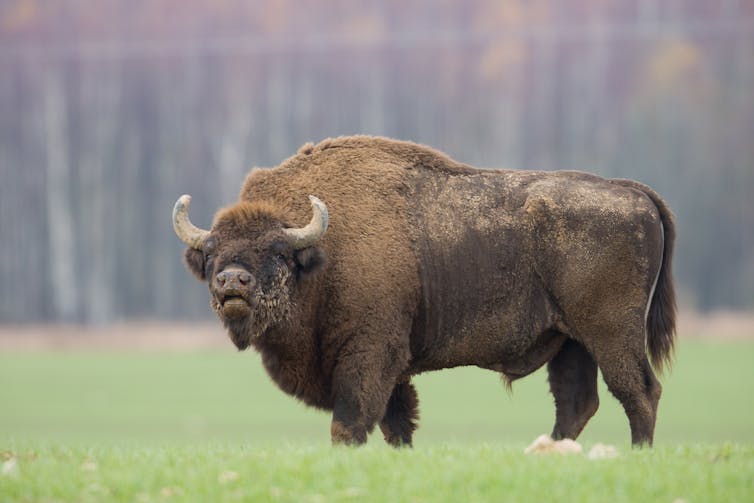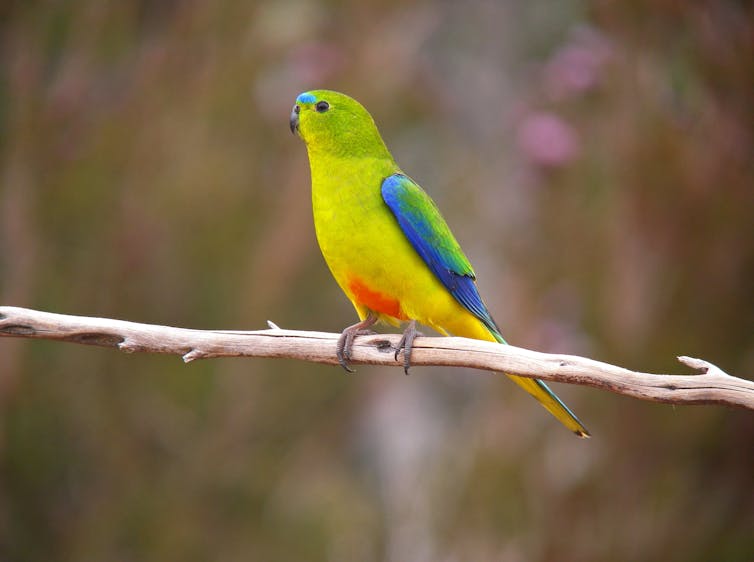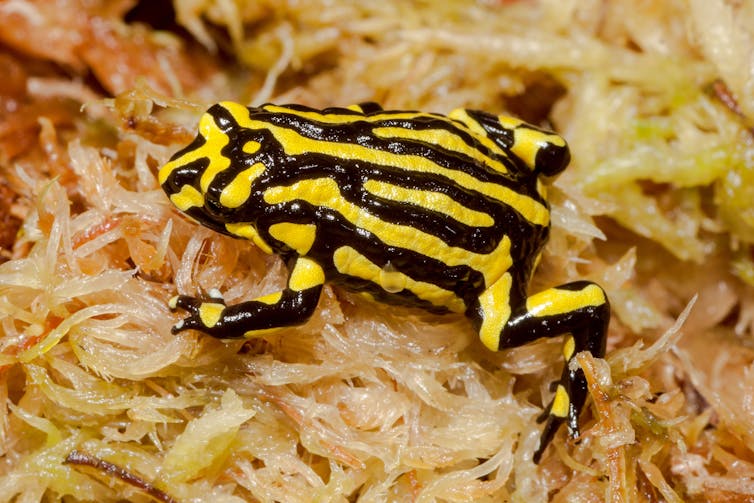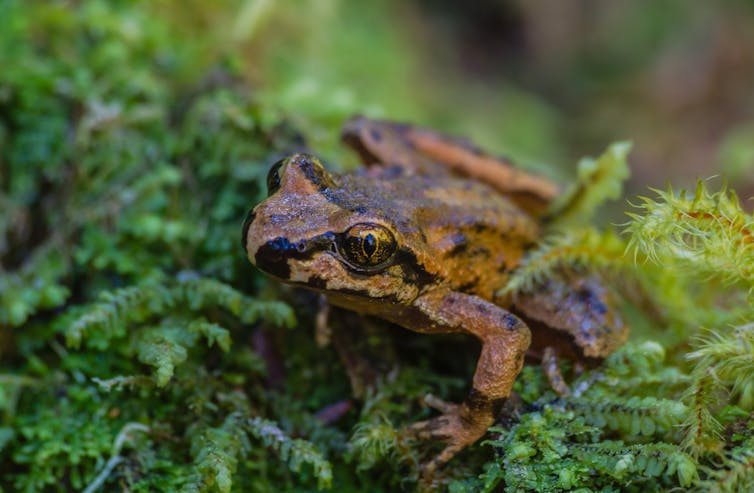Source: The Conversation (Au and NZ) – By Lachlan G. Howell, Casual Academic and PhD Candidate | School of Environmental and Life Sciences, University of Newcastle
More and more threatened species are relying on captive breeding to avoid extinction. Some species on the brink only exist in captivity, and others depend on captive breeding for their recovery before they’re released to the wild.
Captive breeding programs face major challenges to achieve the best conservation outcomes, particularly high economic costs, and loss of vital genetic diversity from wild populations after even a few generations in captivity.
Our economic and genetic modelling published today shows how freezing genetic material and using assisted reproduction could provide a much-needed support-tool for captive breeding programs, solving genetic and economic issues and allowing zoos to breed more species and expand their valuable work.
These are the same tools and technologies commonly used in animal agriculture, research, medicine and disease and human fertility to boost production, lower costs, and produce healthy and strong humans and animals.
Captive breeding is powerful but not perfect
No-one should doubt the value of captive breeding to conservation. The European bison, California condor and Australia’s Southern Corrobboree Frog are three iconic species which would be extinct without captive breeding. Iconic Australian species the Orange-bellied Parrot and greater bilby have been captive bred for over 30 years.
Captive breeding is expensive in resources, labour and capital. Programs have high start-up costs, in the hundreds of thousands or even millions of dollars. High annual on-going costs, on average, are over $200,000 per year for a single species. Many programs are open-ended and will be required for many years or even decades if they are to achieve their objectives.
The high costs of current programs prevent conservationists from assisting many species that desperately need captive breeding. Amphibians are a case in point. Disease and habitat loss is decimating wild amphibian populations globally. There are now over 900 amphibian species which need captive populations. Over 200 of these species need it urgently to avoid extinction. Despite hundreds of species in need, the estimated global capacity and available resources can provide captive populations for no more than 50 amphibian species.
Read more: Swingers’ hookup program can find the right match for endangered species
The costs are one thing, the genetics are something else. Captive breeding programs face significant challenges with genetic diversity. These are common even in some of the longest running and well-resourced captive breeding programs, such as giant pandas and Tasmanian devils.
Genes are lost after even one generation of captive breeding, and in just a few generations, animals most likely to thrive and breed in captivity show traits of domestication and adaptation to captivity. Inbreeding depression is unavoidable in small captive colonies typical of some captive programs. The loss of wild genes affects the overall fitness of captive bred animals for release back to the wild.
To counter the loss of genes in captive populations, the common global target for captive programs is to maintain 90% of the original captive population’s genetic diversity for one hundred years. This is considered gold standard practice and aims to ensure reintroductions of animals into the wild long in the future will occur using animals with minimal genetic issues.

This target is unachievable in most programs because it is not feasible to keep colonies large enough to reduce inbreeding rates to the level required. But using biobanking and existing or developing assisted reproductive technologies could solve genetic and cost issues and finally make this target achievable.
What is biobanking?
Biobanking is the frozen storage of various living cells from threatened species, particularly sex cells, including sperm, eggs and embryos. Frozen samples can be kept long-term as insurance against extinction or thawed for use in conservation genetic management.
Read more: Tasmanian devils reared in captivity show they can thrive in the wild
Biobanking is not uncommon. Large commercial biomedical biobanks routinely store cell lines for cancer and other medical research. Biobanking is used extensively to store seeds of crops and threatened plants and in animal agriculture to store rare or valuable breeds of livestock animals.
Biobanks exist for conservation also, for example the Frozen Zoo in San Diego, the UK’s Frozen Ark and the Australian Frozen Zoo store frozen samples of some of the world’s most threatened species. Biobanking is helping save the black-footed ferret from extinction after the last remaining ferrets (less than twenty) were brought into a captive breeding program in the 1980s and supplemented with frozen sperm after many years to add back lost genes.

What we found
Using real data on the economic costs of captive breeding, we generated models for the threatened Oregon spotted frog (Rana pretiosa), a native of Canada and North America, which predict program costs and rates of genetic diversity loss for captive populations of any size. We then calculated how these costs change, and inbreeding rates reduce, when genes are added back into captive populations each generation using cryopreserved sperm. These models will work on any species where costs of captive breeding are available.
Read more: Personality matters: when saving animals, fortune favours the bold
The results for the Oregon spotted frog model were startling. Biobanking dramatically slowed the rate of inbreeding and required far fewer live frogs to be held. Under normal captive breeding conditions, over 1,800 live frogs were required to meet the genetic target. By using biobanking, this number was reduced to 58 live frogs.
The estimated cost savings and the improved genetic fitness for the Oregon spotted frog were profound. The conventional captive population required to meet the genetic target of 90% genetic diversity would cost over $2.8 million to set up, followed by $537 million in a total 100-year program. The biobanked population would cost $121,000 to set up, followed by total costs of only around $20 million over the same period. This represents a 26-fold reduction in overall costs from normal captive breeding to the biobanking approach.

A new era of captive breeding?
Investment in the biobanking approach could allow captive breeding institutions to maintain animals that are fitter and more like those from wild populations. Captive breeding programs could meet genetic targets which have never been achieved and produce animals more suited for release to the wild.
The drastically reduced costs would allow institutions to hold many more species. With investment in research on the underlying technologies, the approach would not be limited to amphibians and could work in any species. Building in biobanking could usher in a new era of captive breeding for a much greater number of species in desperate need.
Read more: Zoos aren’t Victorian-era throwbacks: they’re important in saving species
– ref. Human reproductive technologies like sperm freezing and IVF could be used to save threatened species – https://theconversation.com/human-reproductive-technologies-like-sperm-freezing-and-ivf-could-be-used-to-save-threatened-species-148637







